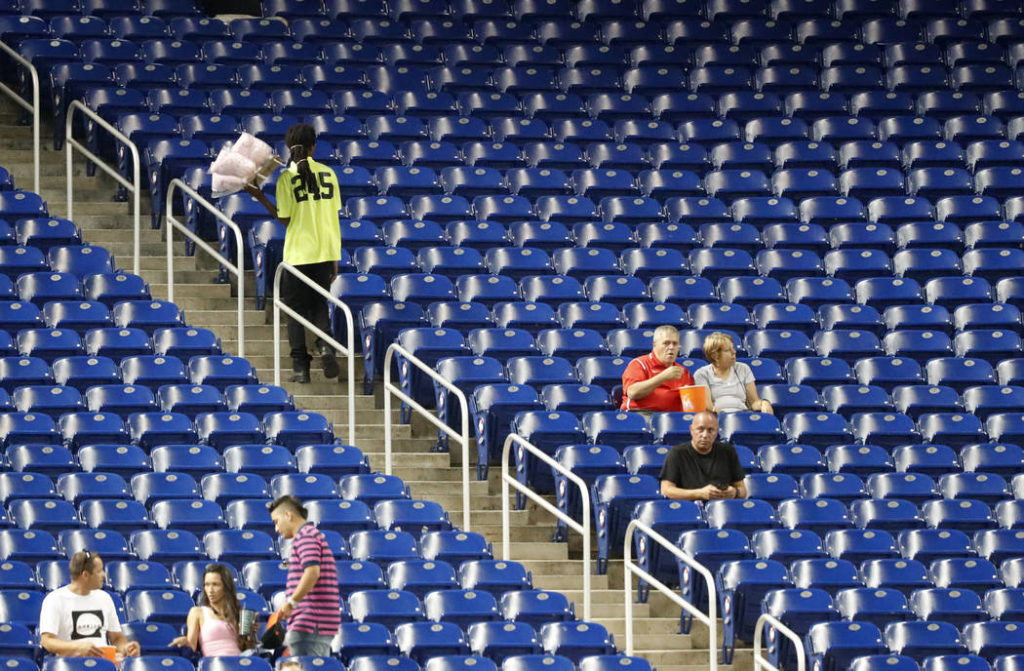No denying that climate for youth, pro sports is changing

By DERON SNYDER (as published in The Washington Times)
Despite its torrents of revenue spouting like geysers, and its massive footprint on our socio-cultural landscape, the sports-industrial complex has seen better days.
Even as the Little League World Series gears for its 66th year of national TV coverage and MLB postseason contenders jockey for position, cracks in the sports universe have surfaced. Even as NFL teams prepare for their next exhibition game and college football teams study playbooks in fall camp, signs of wear are apparent. Even as NBA and NCAA hoopers enjoy their last few weeks of vacation, there is evidence of decline.
Concern exists on the front end – those who participate – and more on the back end – those who spectate.
Residents of the D.C. metro area are examples of the latter. 24/7 Wall Street, in a recent study based on attendance date from ESPN, identified 12 pro teams that are “running out of fans.” The Washington Redskins ranked fifth on that list, having experienced a 31.1% decline in home attendance from 2008-20018, and being the lone team to fill less than three-quarters of its venue last season (74.4%).
Of course, sluggish turnstiles are not unique to FedEx Field. For an idea of the problem’s scope, scroll through the Empty Seats Galore account on Twitter. There you will find photos of increasingly half-full and near-empty stadiums, ranging across all sports and levels.
MLB’s issues have been well chronicled. Overall attendance dipped 4% in 2018 and is on track for another decline this season. College football has suffered greater erosion. The Wall Street Journal reported last season that announced attendance in FBS dropped for the fourth consecutive year, and the number of fans who actually showed up was roughly 71% of the figure listed in box scores.
Going to venues to watch games in person doesn’t hold the same appeal it once had.
The NBA is an exception – the league has experienced four consecutive seasons of total attendance records – but not where TV ratings are concerned. Although myriad reasons exist for fewer viewers tuning into game broadcasts, no major sports have been spared. They all face a common foe, though, the glut of entertainment options at fans’ fingertips.
Multimedia content helps explain why youth participation has steadily declined, too, the other existential threat to sports as we know them.
But more than video games and Netflix have contributed to the shrinkage, as a fictional 9-year-old athlete points out in “Don’t Retire Kid,” a public awareness campaign from Project Play 2020.
“The pressure it takes to play at my age is just too much,” the boy says at a news conference to announce his retirement from sports. “So I’m done with the endless advice from parents to keep my head up, to keep my head down, to keep my head in the game.… I’ll miss my friends and the fun we had when we were young.
“I said I’d play this game as long as I was having fun. And now, it’s time to call it quits.”
According to Project Play 2020, the average child today spends less than three years playing a sport, quitting by age 11. Separate research from the Sports & Fitness Industry Association finds that only 38% of children ages 6-to-12 played team sports on a regular basis in 2018, down from 45% in 2008.
While kids might cite too much pressure and not enough fun as reasons for quitting, parents can concur on different grounds, rationales that involve zeroes and dollar signs.
WinterGreen Research puts a $17 billion valuation on the U.S. youth-sports economy, which includes everything from travel to equipment to fees and more. TIME reports that the industry has grown by 55% since 2010. “This sports lifestyle is crazy,” soccer-mom Magali Sanchez told the magazine. “But they’re your kids. You do anything for them.”
But will that produce enough love and affection to keep the sports-industrial complex thriving? Will generations of digital natives attend and/or watch games, and put their children into organized athletics, at rates comparable to Baby Boomers and prior generations?
This isn’t to suggest that drastic shifts will occur any time soon. More likely is a pace in line with the polar ice caps, which have melted faster in the last 20 years than in the last 10,000.
But there’s no denying that the sports climate is changing.
And not for the better.
— Brooklyn-born and Howard-educated, Deron Snyder writes his award-winning column for The Washington Times on Tuesdays and Thursdays. Follow him on Twitter @DeronSnyder.
 Follow
Follow
